



|

|

|
|
Strybing, Arboretum, San Francisco
|
|
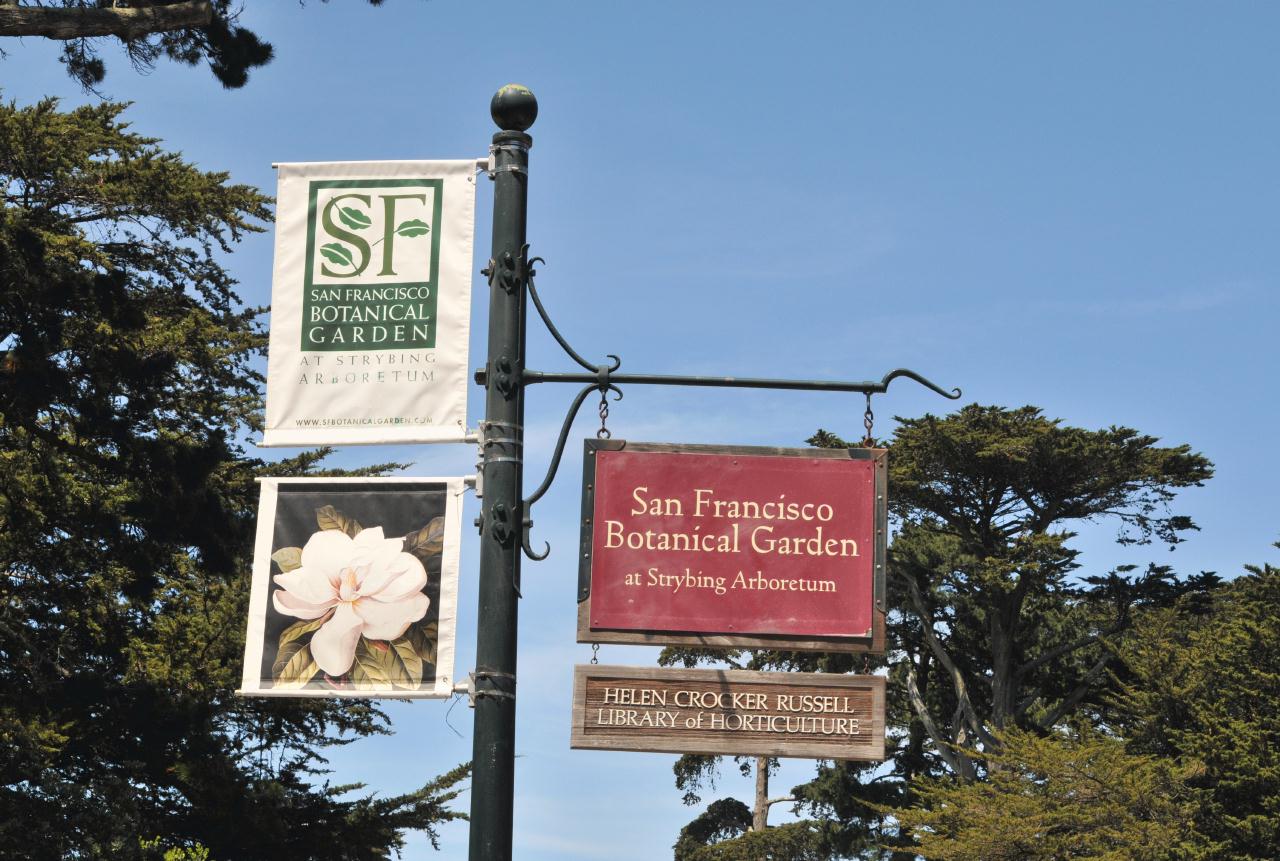 Banners and signs marked the entrance. In addition to the San Francisco Botanical Garden at Strybing Arboretum, the lower sign said that the "Helen Crocker Russell Library of Horticulture" was also located inside.
Strybing Arboretum and Botanical Garden • 9th Ave. at Lincoln, San Francisco, California • (Photo posted Monday 31 May 2010) • (Photo taken 12:55:58 Sunday 2 May 2010) • © 2010 Bryan Costales 
 #125558_4071BCX #125558_4071BCX
Add a comment or report a mistake
|
|
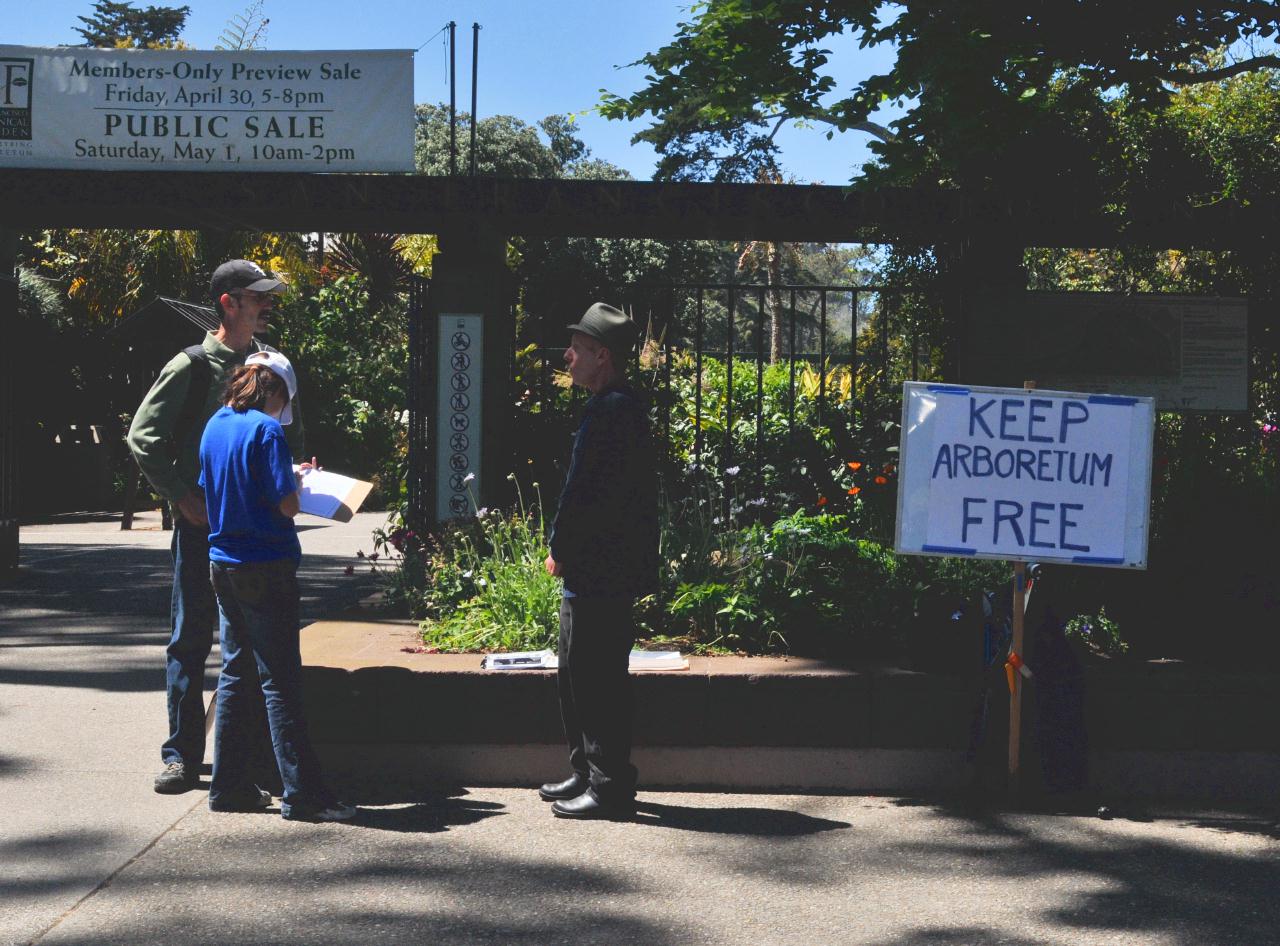
In May of this
year, the Board of Supervisors voted 8-3 to impose a $US 7.00 entry fee for non-residents.
Note that when a similar non-resident entry was charged for the Japanese Tea Garden,
a mere year later, everyone was charged, residents and non-residents alike. Will the same
thing happen to this Arboretum? If the Botanical Garden has its own way it will. In the first
three months of 2010 the San Francisco Botanical Gardens paid $US 30,000.00 to lobbyist
Samuel Lauter
Strybing Arboretum and Botanical Garden • 9th Ave. at Lincoln, San Francisco, California • (Photo posted Monday 31 May 2010) • (Photo taken 12:56:34 Sunday 2 May 2010) • © 2010 Bryan Costales 
 #125634_4072BCX #125634_4072BCX
Add a comment or report a mistake
|
|
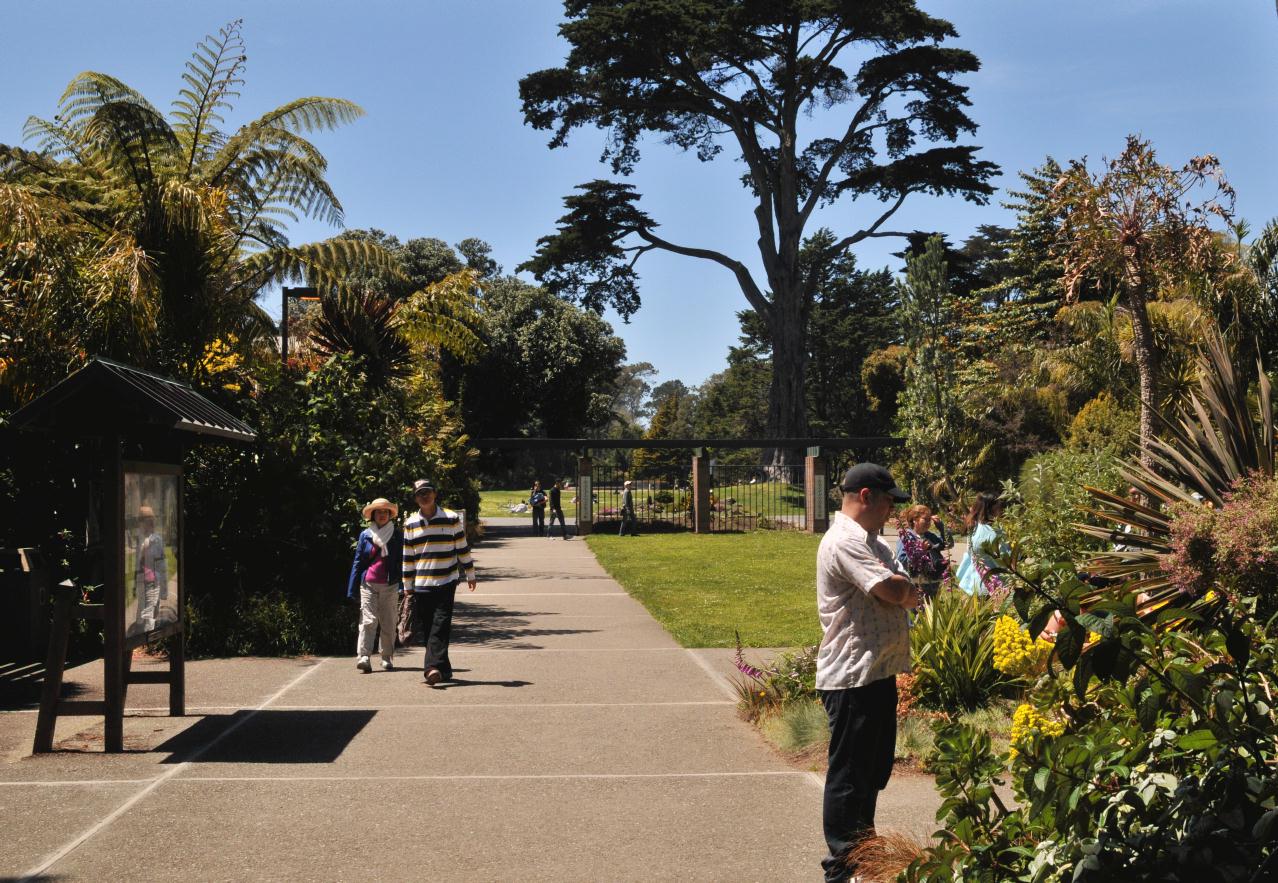
The main entry into the Botanical Gardens. To the left out of frame was the
Helen Crocker Russell Library of Horticulture
Strybing Arboretum and Botanical Garden • 9th Ave. at Lincoln, San Francisco, California • (Photo posted Monday 31 May 2010) • (Photo taken 12:59:24 Sunday 2 May 2010) • © 2010 Bryan Costales 
 #125924_4073BCX #125924_4073BCX
Add a comment or report a mistake
|
|
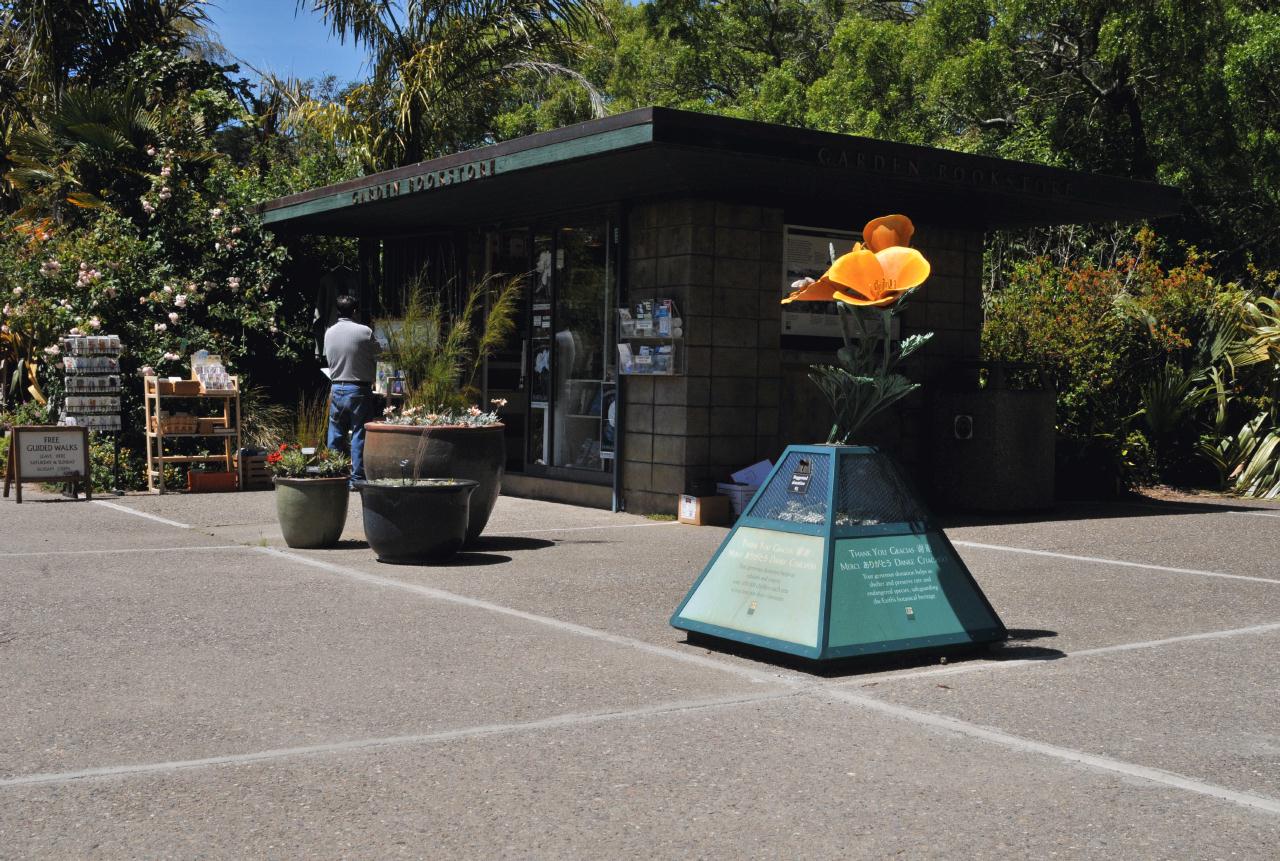 Just inside the main entry was the gift shop and information center. Outside of it, packages of seeds were for sale, but maps and brochures were free. In the foreground were fake California poppies atop a donation bin.
Strybing Arboretum and Botanical Garden • 9th Ave. at Lincoln, San Francisco, California • (Photo posted Monday 31 May 2010) • (Photo taken 12:59:58 Sunday 2 May 2010) • © 2010 Bryan Costales 
 #125958_4076BCX #125958_4076BCX
Add a comment or report a mistake
|
|
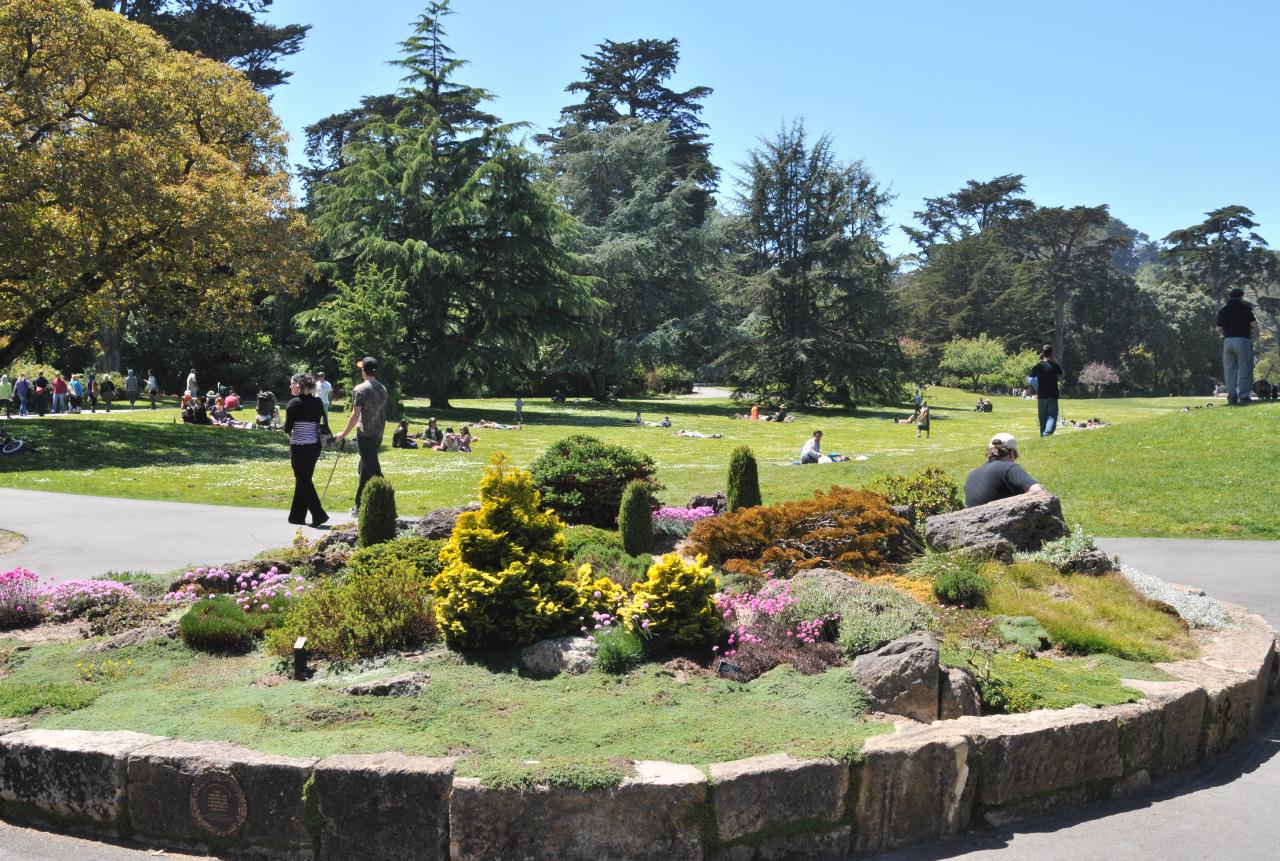 Ahead upon entry was the wide, main grassy area. This lovely park was the only park in the City free of dog pooh because dogs were prohibited. However the park was still occasionally noisy from kids. But when transformed into a world class facility, crowds of tourists and litter may become problems.
Strybing Arboretum and Botanical Garden • 9th Ave. at Lincoln, San Francisco, California • (Photo posted Monday 31 May 2010) • (Photo taken 13:03:22 Sunday 2 May 2010) • © 2010 Bryan Costales 
 #130322_4080BCX #130322_4080BCX
Add a comment or report a mistake
|
|
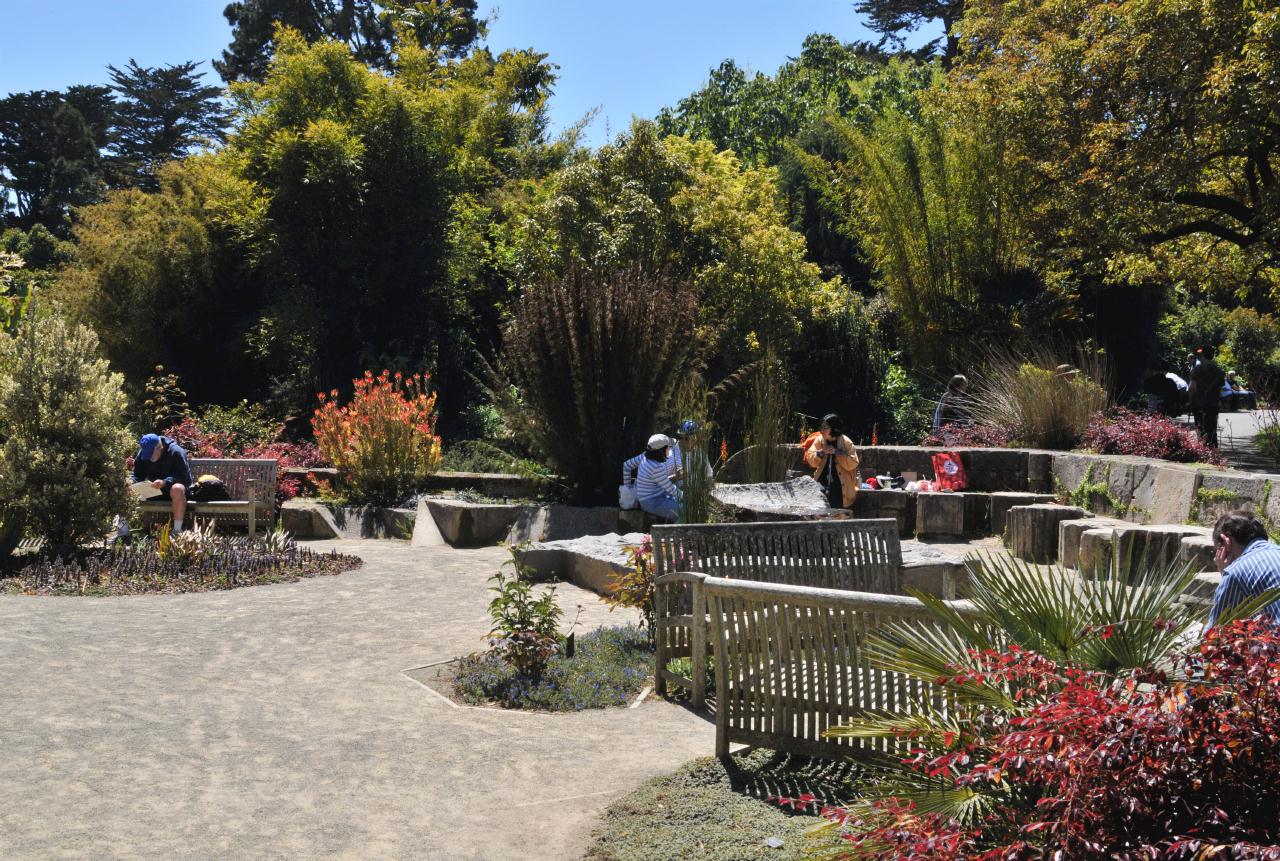 Just to the left near the entrance was a quiet seating area. The area was decorated in a southwestern desert theme. There was a mixture of wooden benches and stone benches. Beyond could be seen the lush paths leading into and through the Botanical Garden.
Strybing Arboretum and Botanical Garden • 9th Ave. at Lincoln, San Francisco, California • (Photo posted Monday 31 May 2010) • (Photo taken 13:03:50 Sunday 2 May 2010) • © 2010 Bryan Costales 
 #130350_4082BCX #130350_4082BCX
Add a comment or report a mistake
|
|
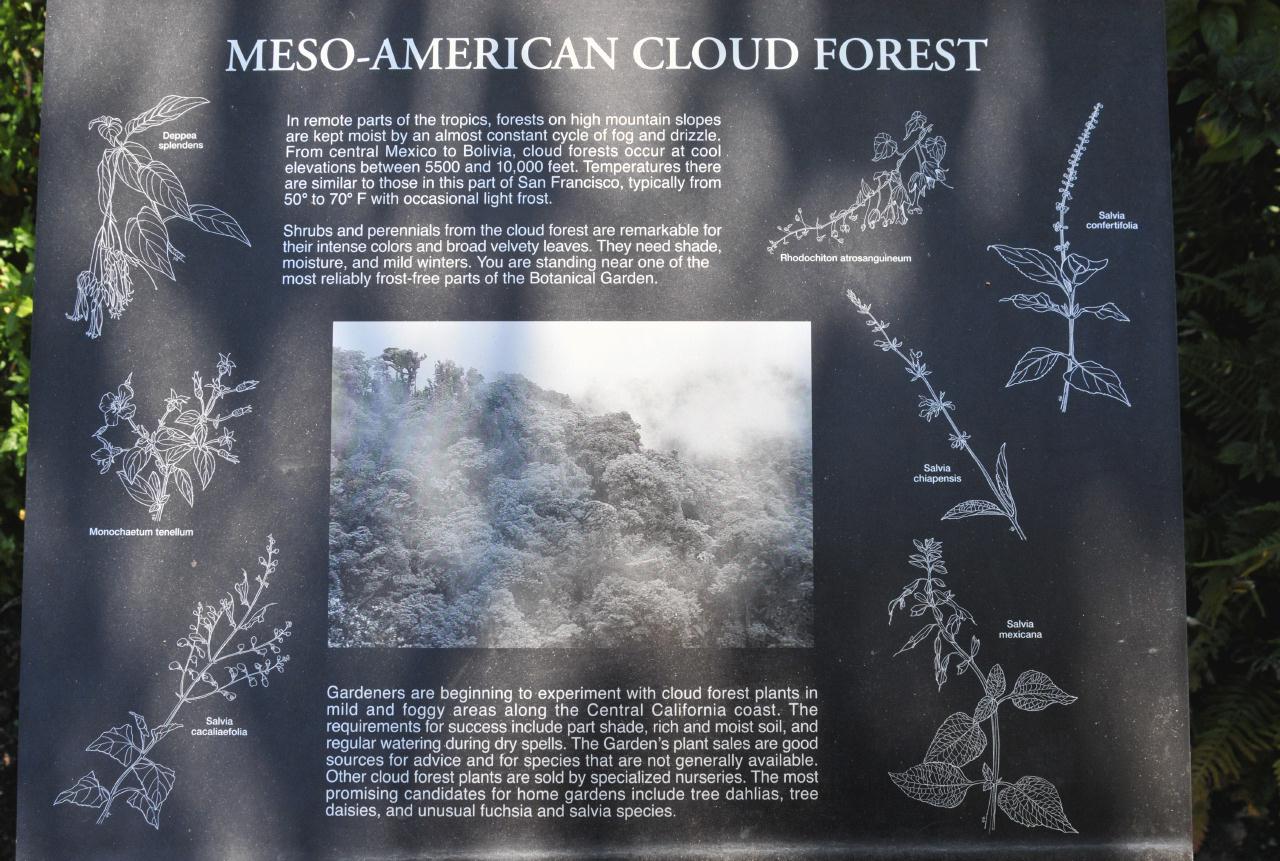 The sign read: MESO-AMERICAN CLOUD FOREST
Strybing Arboretum and Botanical Garden • 9th Ave. at Lincoln, San Francisco, California • (Photo posted Monday 31 May 2010) • (Photo taken 13:12:02 Sunday 2 May 2010) • © 2010 Bryan Costales 
 #131202_4094BCX #131202_4094BCX
Add a comment or report a mistake
|
|
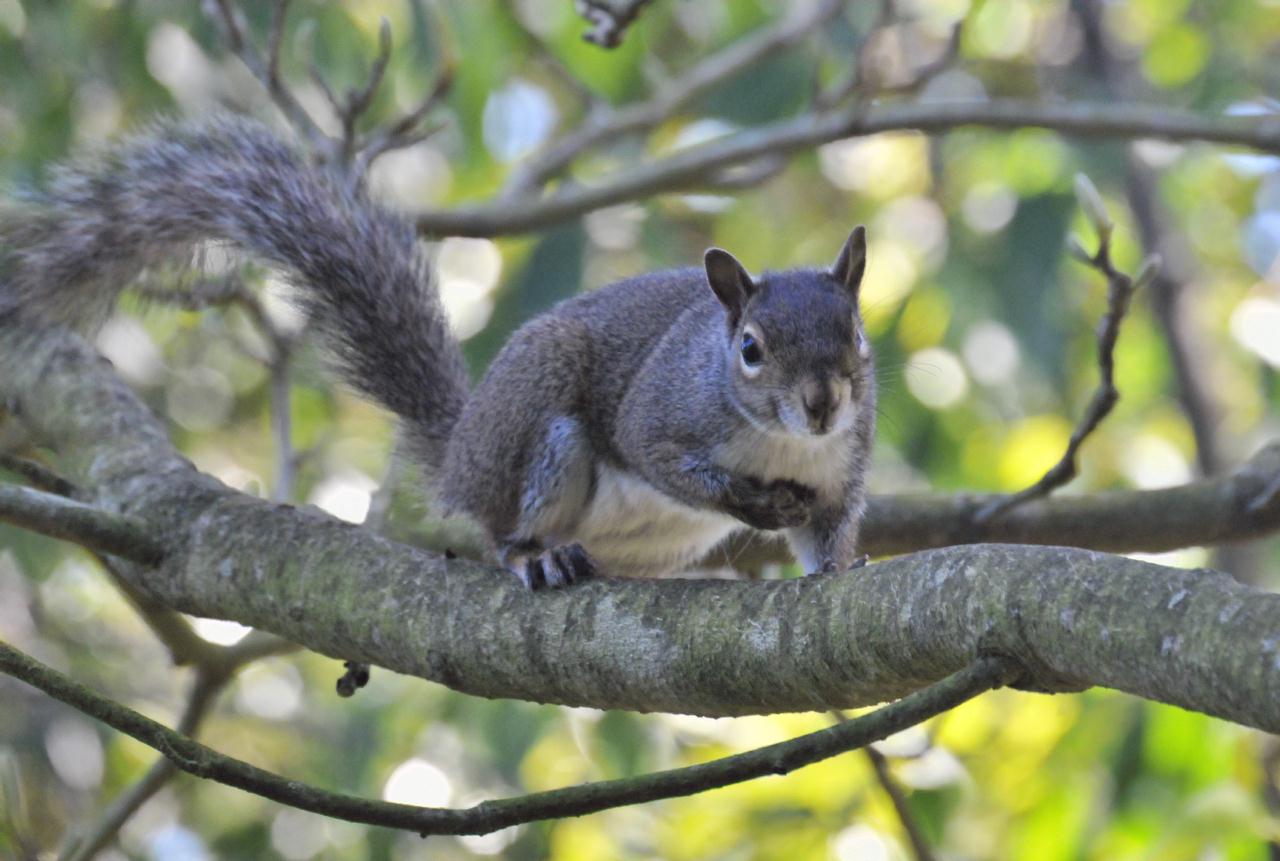 Once into the interior paths of the Botanical Garden, wildlife was there to be discovered. Here was a curious squirrel. Birds were also abundant.
Strybing Arboretum and Botanical Garden • 9th Ave. at Lincoln, San Francisco, California • (Photo posted Monday 31 May 2010) • (Photo taken 13:16:18 Sunday 2 May 2010) • © 2010 Terry Costales 
 #131618_7992TNT #131618_7992TNT
Add a comment or report a mistake
|
|
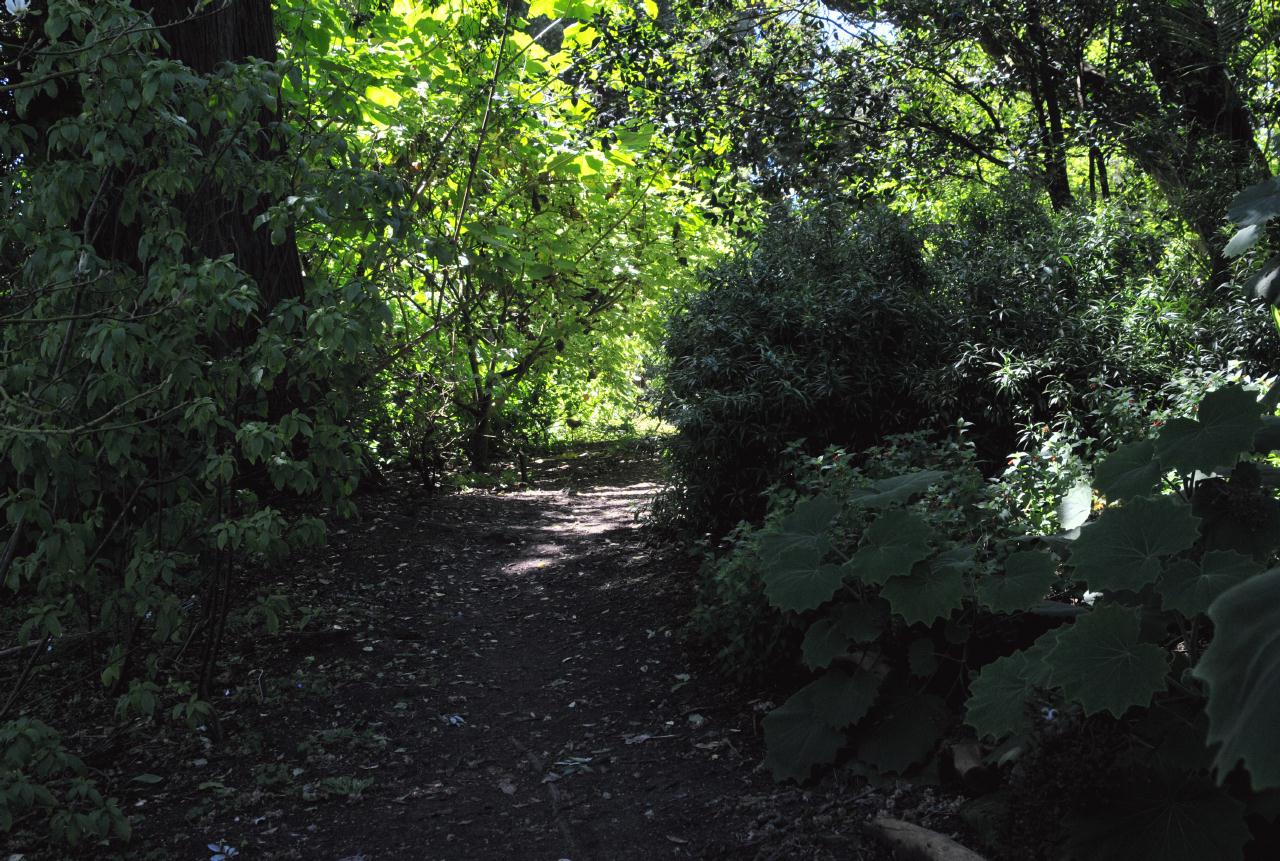 Many of the paths through the denser parts of the Botanical Garden were unpaved. It felt almost as if trekking through a remote jungle somewhere. The Botanical Garden provided moments of pleasant abandon within a city.
Strybing Arboretum and Botanical Garden • 9th Ave. at Lincoln, San Francisco, California • (Photo posted Monday 31 May 2010) • (Photo taken 13:14:18 Sunday 2 May 2010) • © 2010 Bryan Costales 
 #131418_4102BCX #131418_4102BCX
Add a comment or report a mistake
|
|
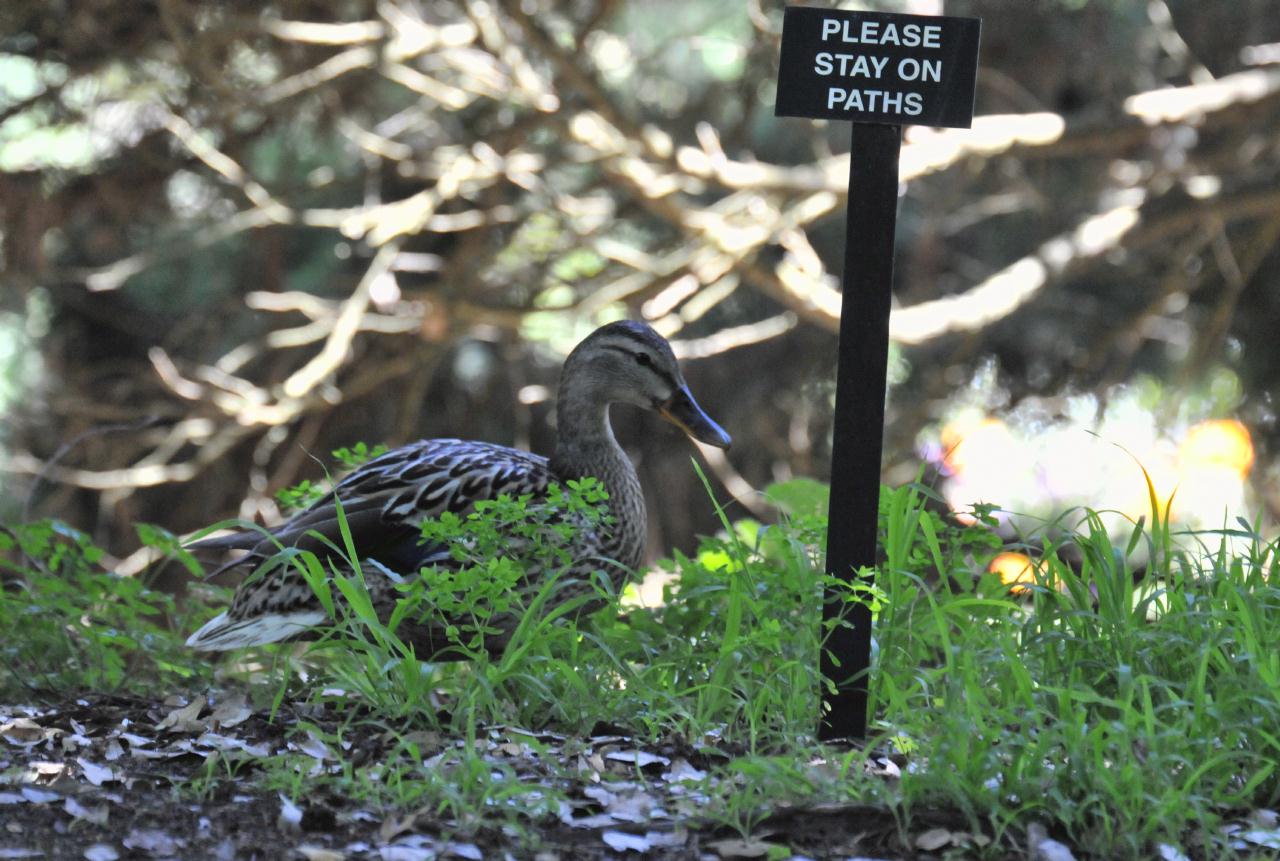 This printed sign only has sway over those who can see, those that are literate, those that speak English, those that can comprehend the request, and those that choose to obey the request. A female mallard duck was observed just off the path.
Strybing Arboretum and Botanical Garden • 9th Ave. at Lincoln, San Francisco, California • (Photo posted Monday 31 May 2010) • (Photo taken 13:17:28 Sunday 2 May 2010) • © 2010 Terry Costales 
 #131728_8000TNT #131728_8000TNT
Add a comment or report a mistake
|
|
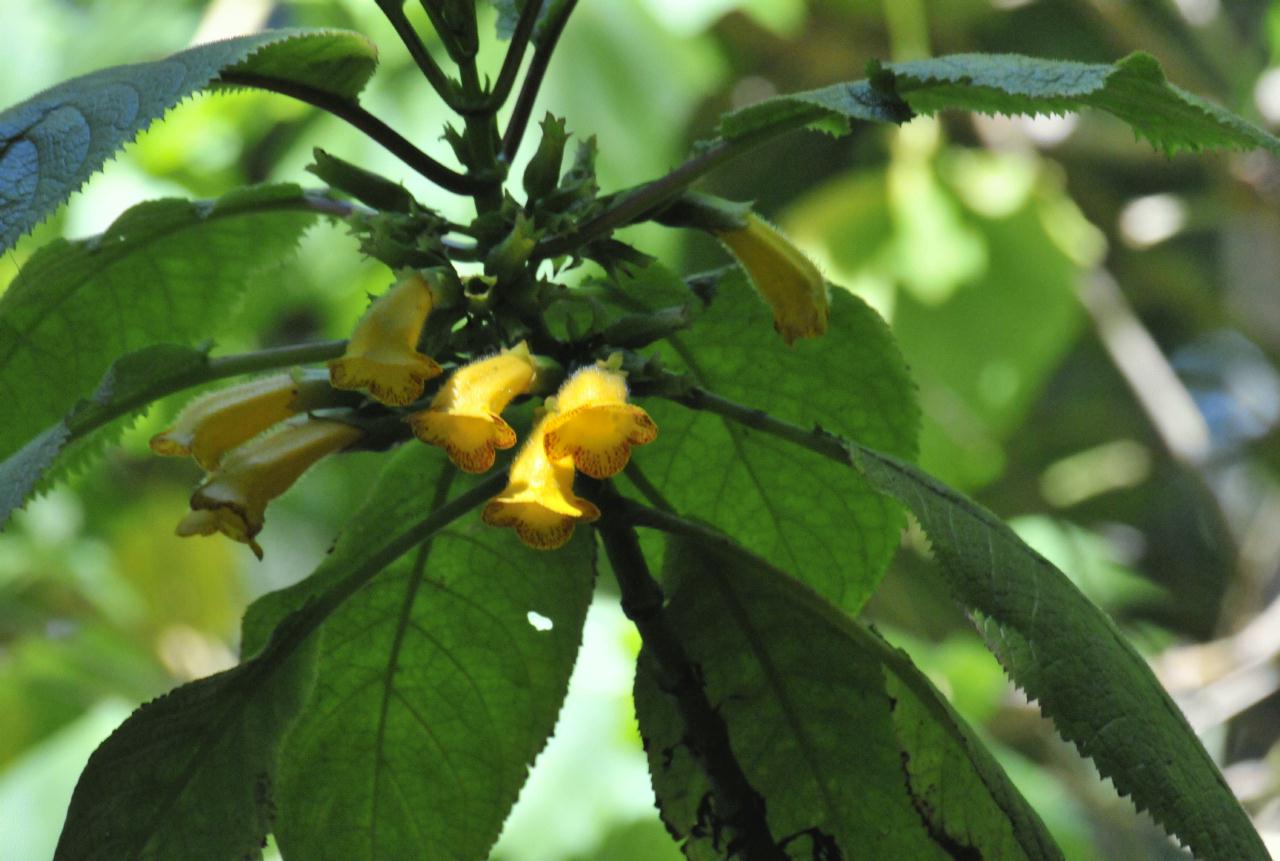 Despite the excellent signs identifying plants, sometimes the signs were ambiguous or missing. Thus, this lovely yellow flower was unidentified.
Strybing Arboretum and Botanical Garden • 9th Ave. at Lincoln, San Francisco, California • (Photo posted Monday 31 May 2010) • (Photo taken 13:18:22 Sunday 2 May 2010) • © 2010 Terry Costales 
 #131822_8003TNT #131822_8003TNT
Add a comment or report a mistake
|
|
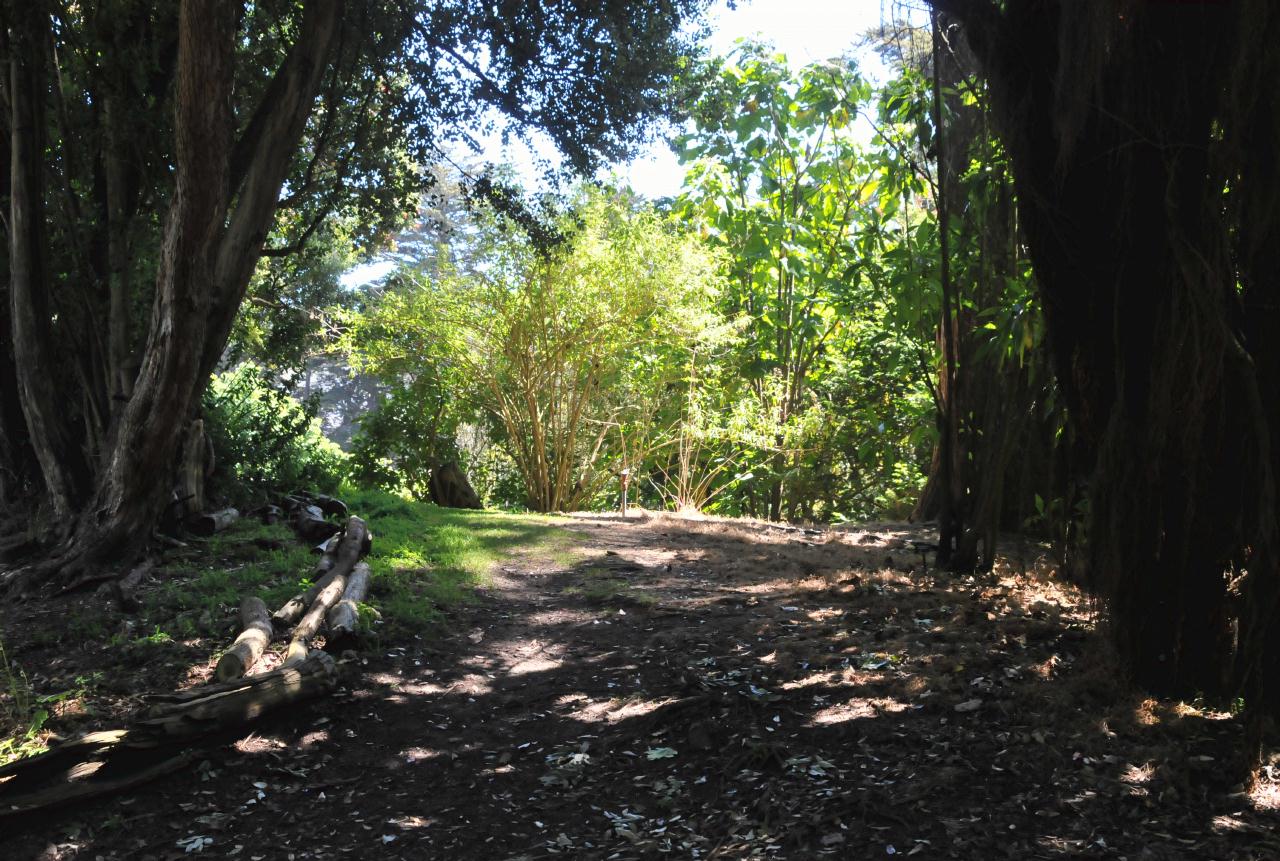 All paths were clearly laid out and some were bordered. Here, for example, the path was lined by logs.
Strybing Arboretum and Botanical Garden • 9th Ave. at Lincoln, San Francisco, California • (Photo posted Monday 31 May 2010) • (Photo taken 13:20:30 Sunday 2 May 2010) • © 2010 Bryan Costales 
 #132030_4115BCX #132030_4115BCX
Add a comment or report a mistake
|
|
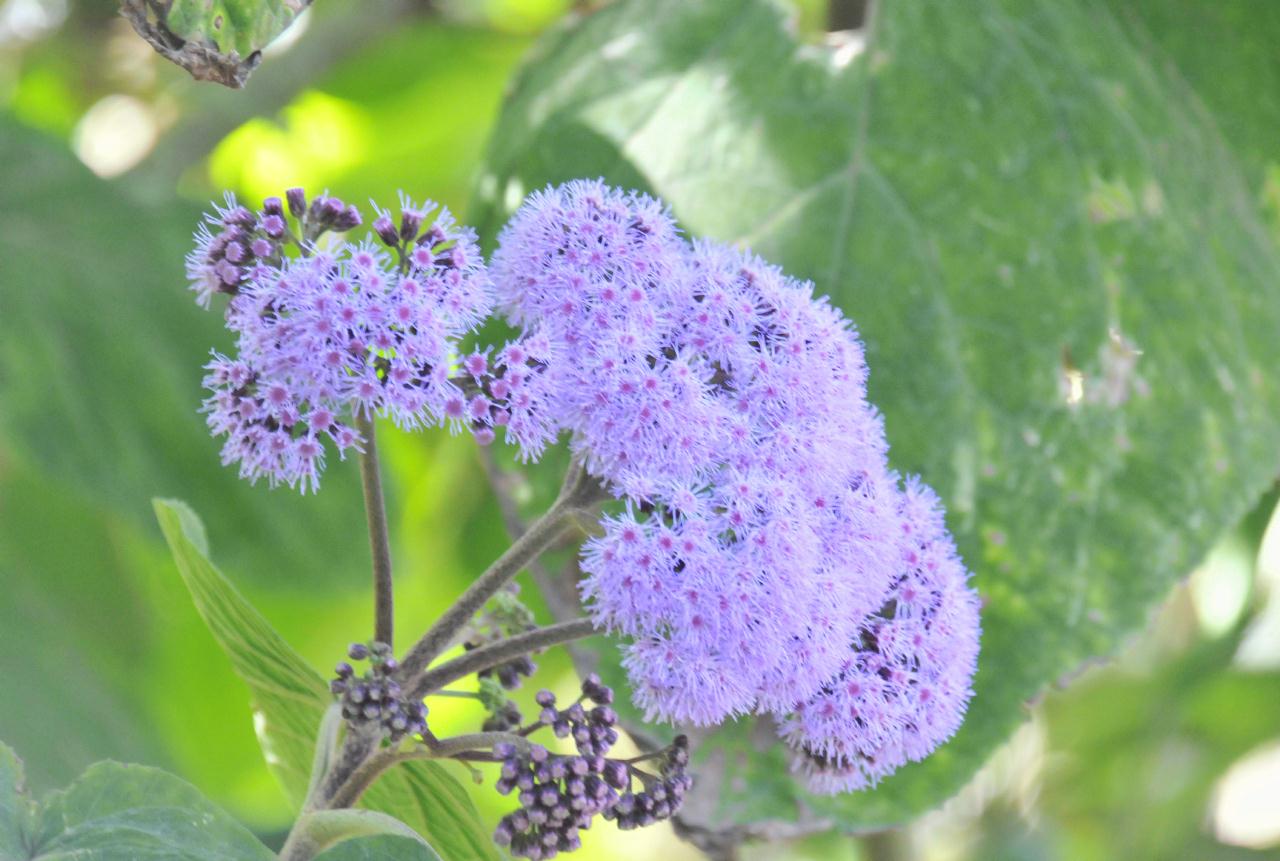
Those plants with clear signs were easy to identify. Here was
one of several large Bartlettina Sordida
From Mexico Strybing Arboretum and Botanical Garden • 9th Ave. at Lincoln, San Francisco, California • (Photo posted Monday 31 May 2010) • (Photo taken 13:22:42 Sunday 2 May 2010) • © 2010 Terry Costales 
 #132242_8007TNT #132242_8007TNT
Add a comment or report a mistake
|
|
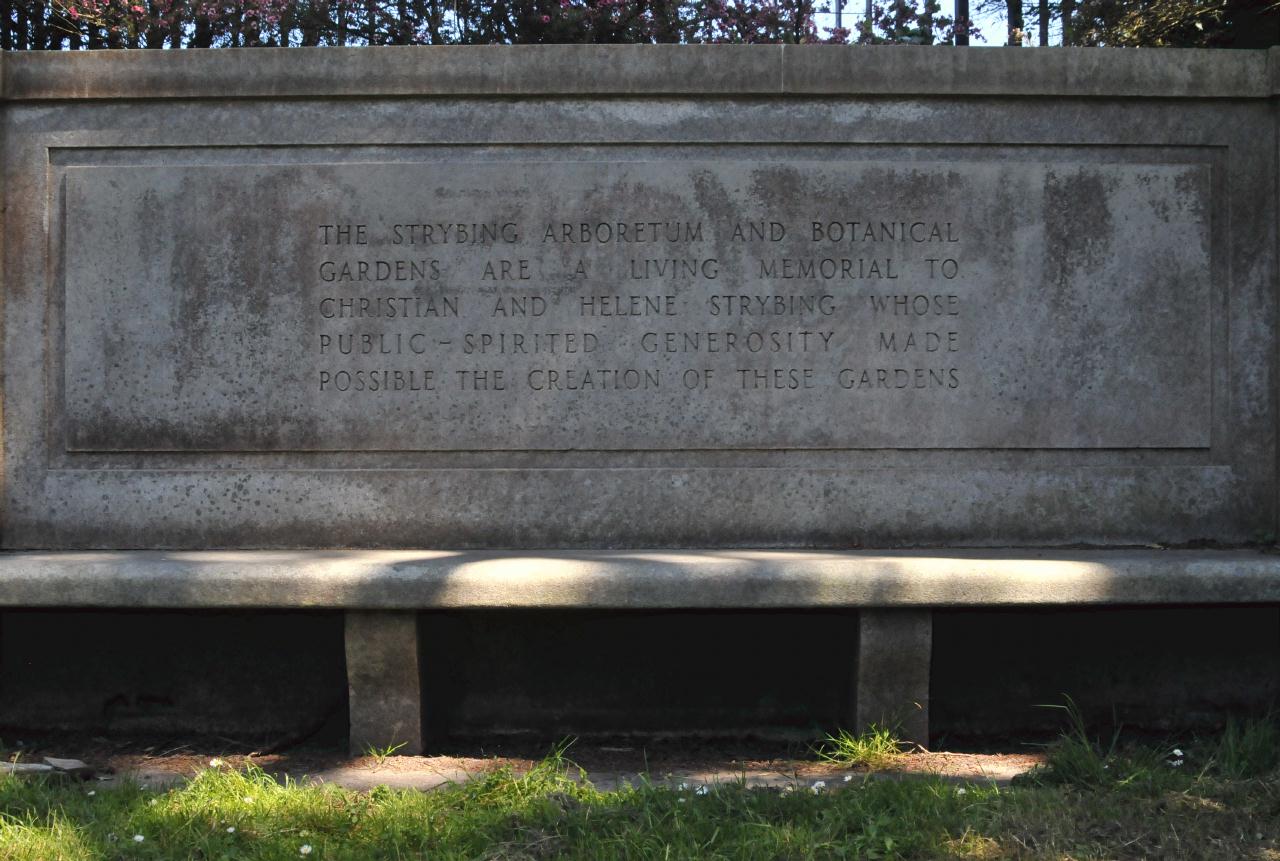 A marble bench was dedicated to the memory of the founders. The text engraved on the back of the bench read: The Strybing Arboretum and Botanical Gardens are a living memorial to Christian and Helene Strybing whose public-spirited generosity made possible the creation of these gardens.
Strybing Arboretum and Botanical Garden • 9th Ave. at Lincoln, San Francisco, California • (Photo posted Monday 28 June 2010) • (Photo taken 13:13:40 Sunday 2 May 2010) • © 2010 Bryan Costales 
 #132340_4156BCX #132340_4156BCX
Add a comment or report a mistake
|
|
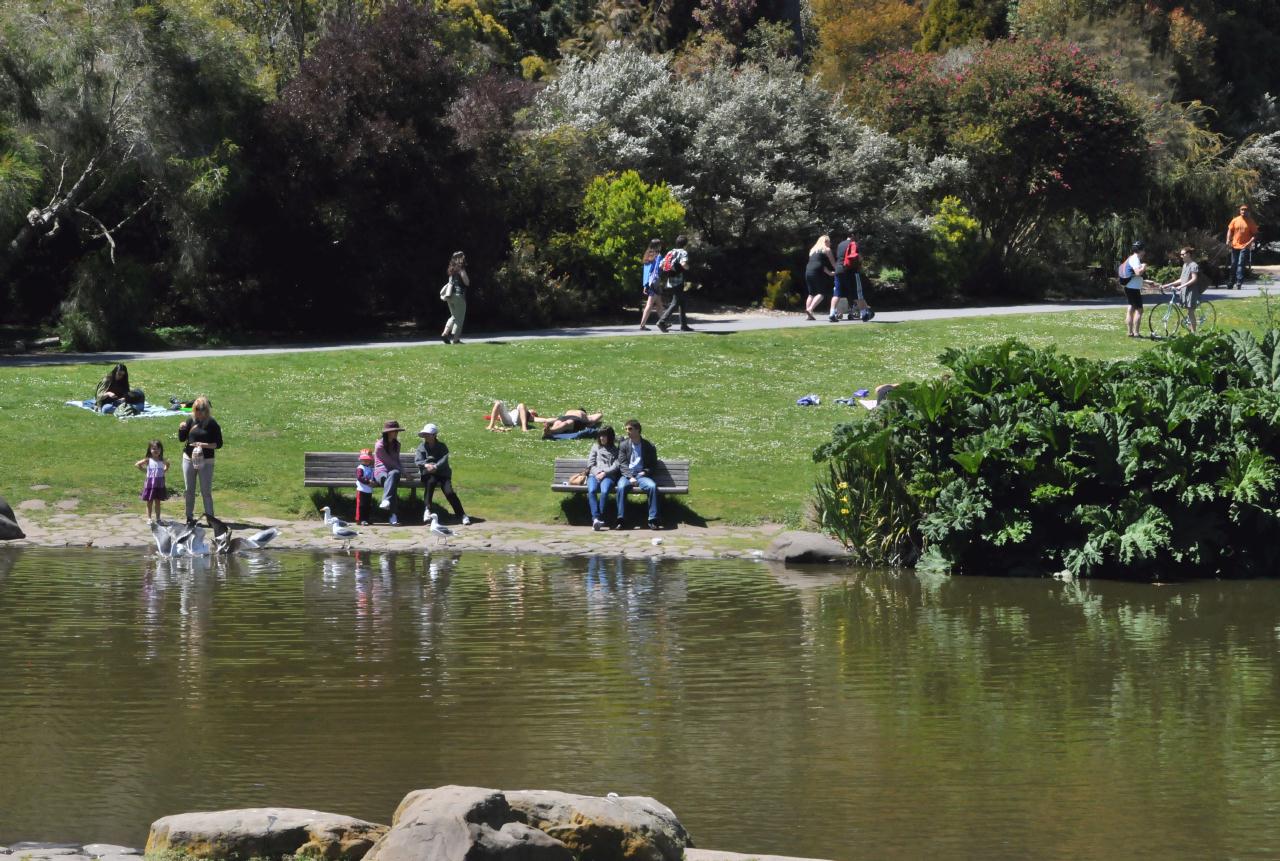 The park included a man-made pond labeled, but not named, the Wildfowl Pond. This pond was a good place to see mallard ducks.
Strybing Arboretum and Botanical Garden • 9th Ave. at Lincoln, San Francisco, California • (Photo posted Monday 28 June 2010) • (Photo taken 13:32:30 Sunday 2 May 2010) • © 2010 Bryan Costales 
 #133230_4159BCX #133230_4159BCX
Add a comment or report a mistake
|
|
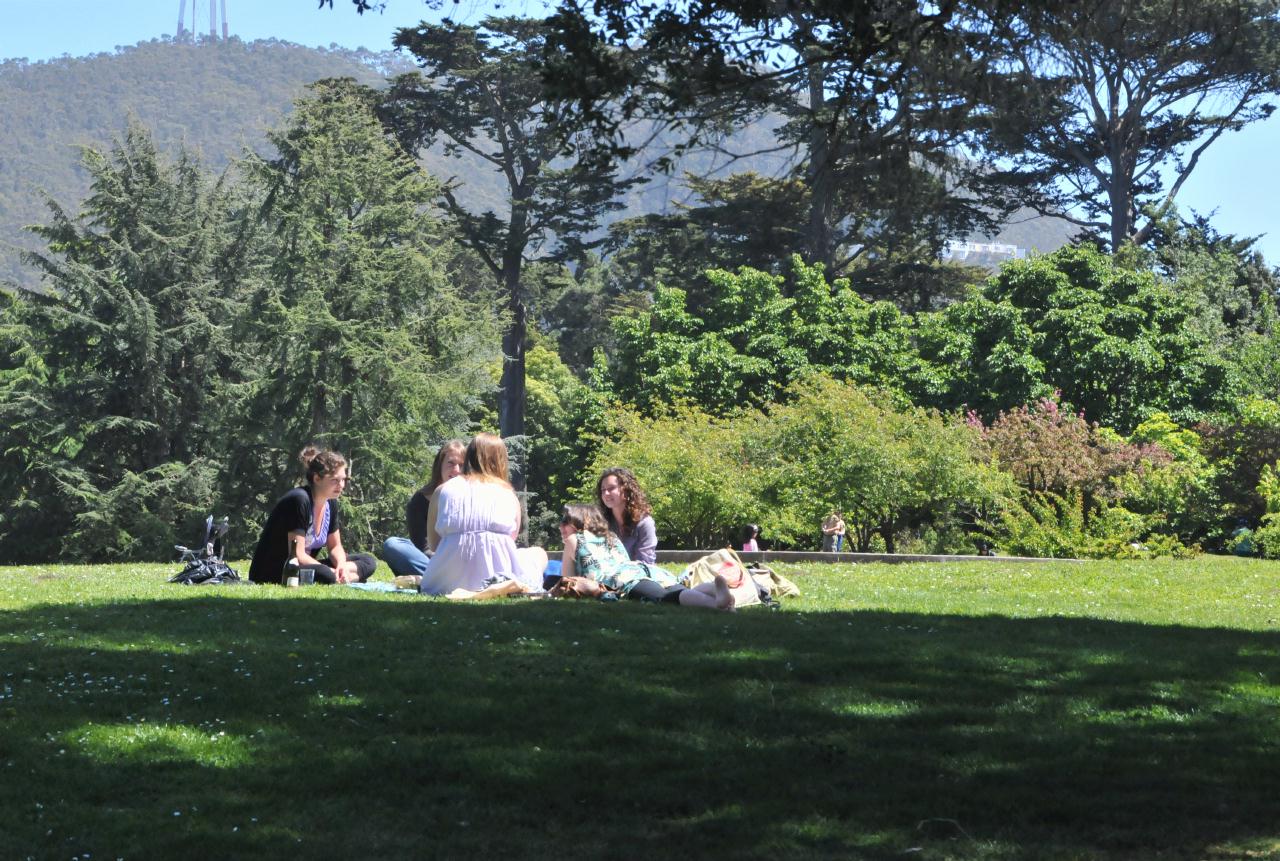 The pond was surrounded by areas of lawn where folks could just hang out or even have a picnic. Every lawn in the arboretum was surrounded by scenic backgrounds.
Strybing Arboretum and Botanical Garden • 9th Ave. at Lincoln, San Francisco, California • (Photo posted Monday 28 June 2010) • (Photo taken 13:32:38 Sunday 2 May 2010) • © 2010 Bryan Costales 
 #133238_4160BCX #133238_4160BCX
Add a comment or report a mistake
|
|
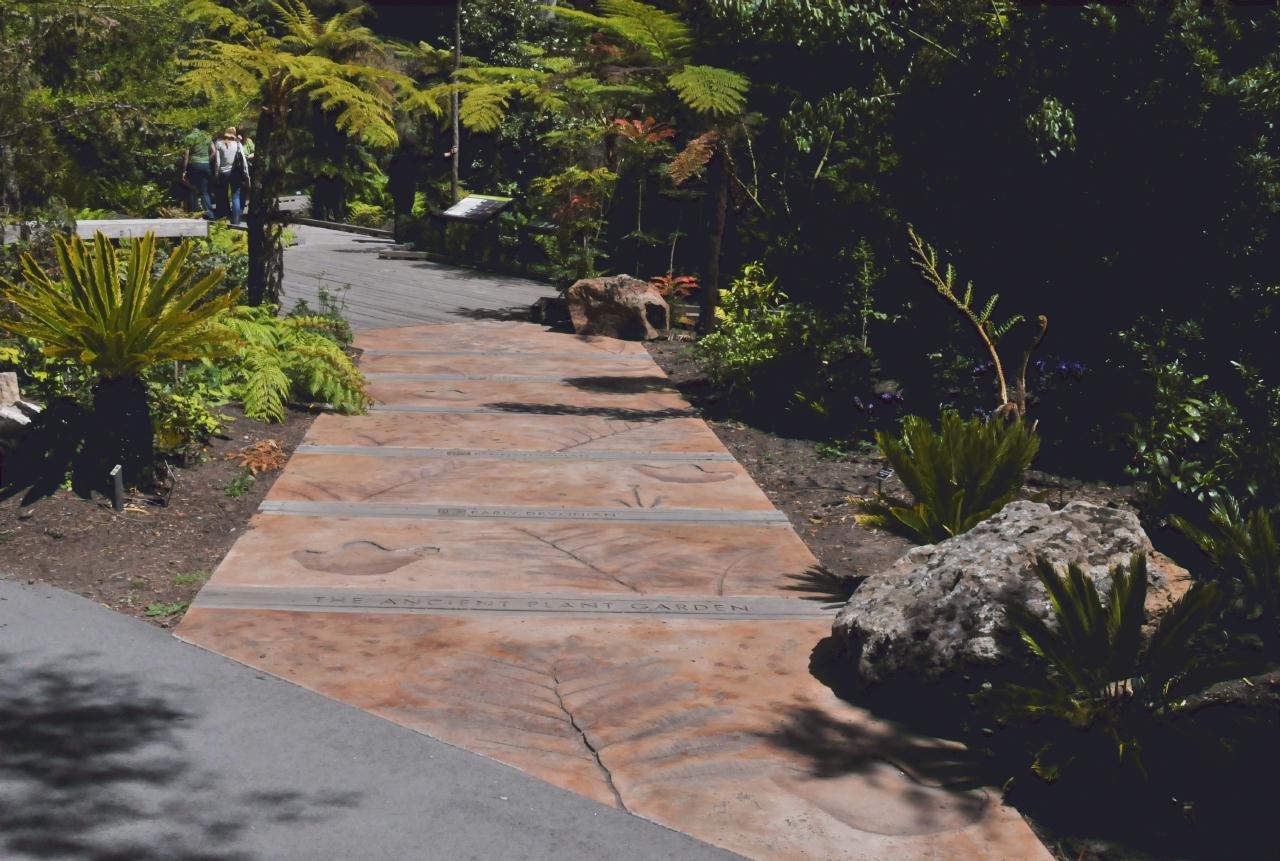
The Ancient Plant Garden was a looping walkway past plants
that have survived since prehistoric times.
Strybing Arboretum and Botanical Garden • 9th Ave. at Lincoln, San Francisco, California • (Photo posted Monday 28 June 2010) • (Photo taken 13:39:12 Sunday 2 May 2010) • © 2010 Bryan Costales 
 #133912_4180BCX #133912_4180BCX
Add a comment or report a mistake
|
|
 A zig-zag path lead through the Ancient Plant Garden.
Strybing Arboretum and Botanical Garden • 9th Ave. at Lincoln, San Francisco, California • (Photo posted Monday 28 June 2010) • (Photo taken 13:42:36 Sunday 2 May 2010) • © 2010 Bryan Costales 
 #134236_4193BCX #134236_4193BCX
Add a comment or report a mistake
|
|
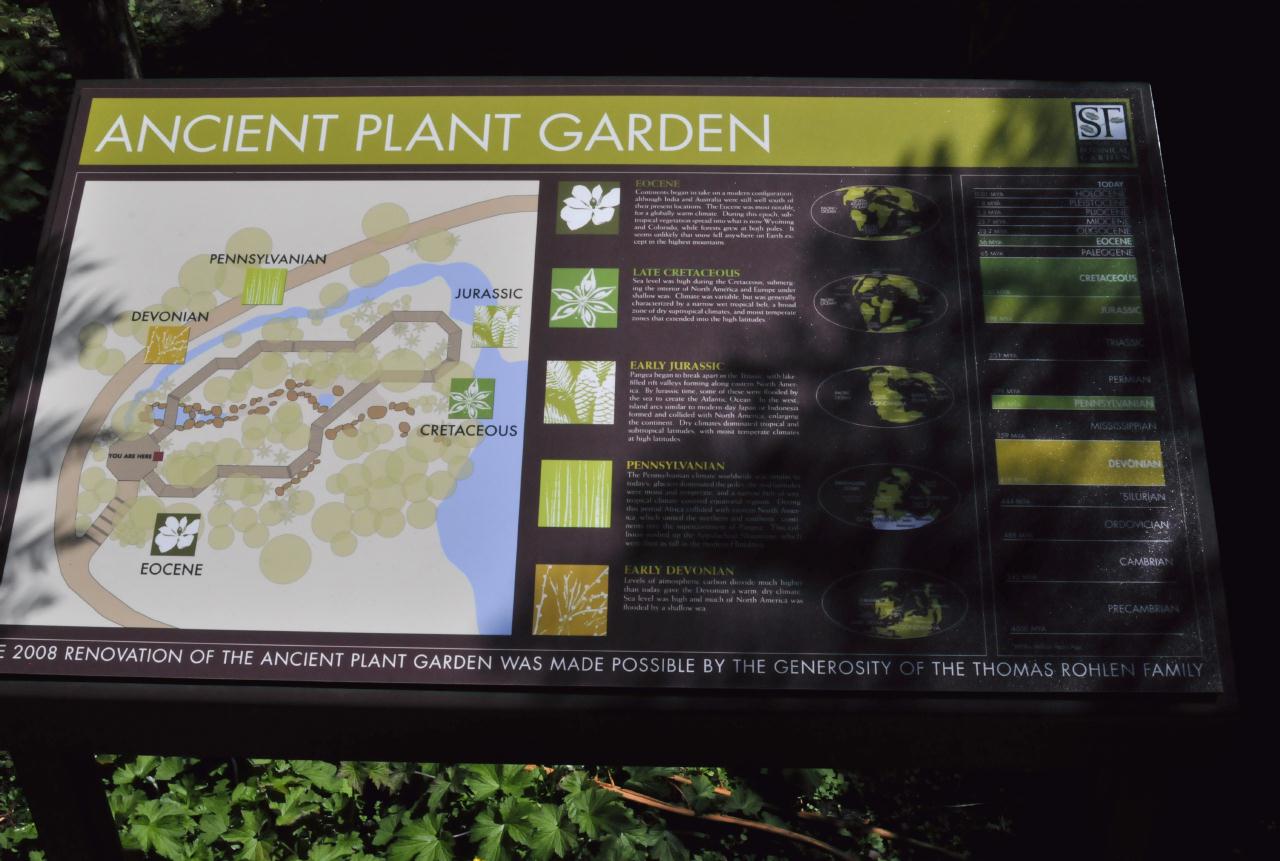
A map on a stand showed what was where in the Ancient Plant Garden.
Note the five prehistoric epochs shown: The Eocene
Strybing Arboretum and Botanical Garden • 9th Ave. at Lincoln, San Francisco, California • (Photo posted Monday 28 June 2010) • (Photo taken 13:51:28 Sunday 2 May 2010) • © 2010 Bryan Costales 
 #135128_4216BCX #135128_4216BCX
Add a comment or report a mistake
|
 |
| home • contact • topic guide • top 25 • photos • video • writing • blogs • upload • terms • privacy |